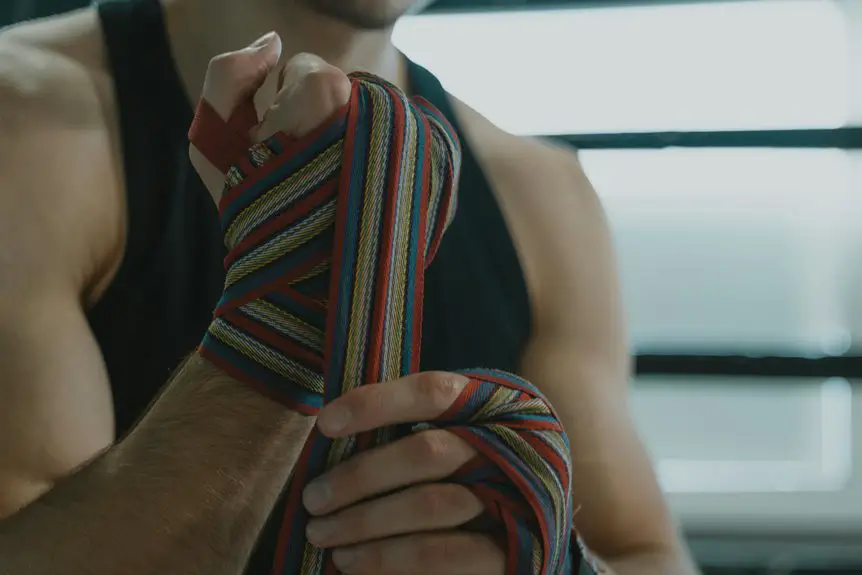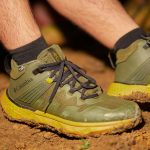When you’re choosing gear for intense workouts, moisture management is key. Both polyester and nylon promise to keep you dry, but their performance differs more than you might expect. If you want to stay comfortable and avoid that clingy, damp feeling, understanding how each fabric handles sweat is essential. Let’s explore which fabric truly delivers when the sweat starts pouring.
Table of Contents
Key Takeaways
- Polyester repels water and dries quickly, making it superior for moisture-wicking during intense workouts.
- Nylon absorbs more moisture but wicks reasonably well, though it dries slower than polyester.
- Polyester’s quick-drying ability prevents discomfort from sweat buildup in hot, humid conditions.
- Nylon offers a smoother feel and retains warmth, better suited for cooler, damp environments.
- Polyester is generally preferred for high-intensity athletic activities due to its efficient sweat management.
Understanding Moisture Absorption and Wicking Capabilities
When you’re choosing between polyester and nylon for athletic wear, understanding their moisture absorption and wicking capabilities is essential.
Polyester has low moisture retention due to its hydrophobic fabric structure, which means it repels water and dries quickly. This makes it excellent at pulling sweat away from your skin, keeping you dry during intense workouts.
Nylon, on the other hand, absorbs more moisture because its fabric structure is more hydrophilic. While it can hold onto sweat longer, it still manages to wick moisture away reasonably well, though it takes more time to dry compared to polyester.
Comparing Breathability and Comfort in Active Wear
Although both polyester and nylon excel in moisture management, their breathability and comfort differ greatly, which can impact your overall experience during physical activity.
Polyester typically has a coarser fabric texture, which might feel less soft against your skin but offers excellent thermal regulation by allowing heat to escape efficiently.
Polyester’s coarser texture may feel less soft but excels in letting heat escape efficiently.
Nylon, on the other hand, boasts a smoother, silkier feel that many find more comfortable and less irritating during extended wear. Its breathability is slightly lower than polyester’s, but it still provides decent airflow to keep you cool.
When choosing active wear, consider how each fabric’s texture and ability to regulate temperature align with your preferences and workout intensity to maximize comfort and performance.
Durability and Strength: Nylon vs. Polyester
Because you need gear that withstands intense activity, understanding the durability and strength of nylon versus polyester is essential.
Both fibers differ in fiber composition, which directly impacts their tensile strength and longevity. Here’s what you should know:
- Nylon typically boasts higher tensile strength, making it more resistant to tears and abrasions during rigorous workouts.
- Polyester, while slightly less strong, offers excellent resistance to UV damage and maintains its shape better over time.
- Both fibers resist stretching, but nylon’s elasticity can provide better recovery, while polyester’s durability shines in repeated use.
Knowing these differences helps you pick the right material for your specific training needs, ensuring your active wear lasts longer and performs reliably.
Performance in Varied Climate Conditions
Understanding how polyester and nylon perform in different climates can help you choose the best fabric for your workouts.
Polyester excels in temperature regulation, keeping you cool in hot weather by wicking moisture away quickly. It also dries faster, which prevents discomfort during intense sessions.
Nylon, on the other hand, offers better weather adaptability in cooler or damp conditions due to its insulating properties and resistance to wind. It retains warmth while still allowing some breathability, making it a solid choice for variable outdoor environments.
When you train in shifting climates, consider how each fabric manages moisture and heat. Polyester suits high temperatures and humid settings, while nylon handles cooler, unpredictable weather well.
Knowing these strengths guarantees you stay comfortable regardless of the conditions.
Making the Right Choice for Athletic Needs
Choosing between polyester and nylon depends largely on your specific athletic needs and the environments where you train.
To make the right choice, consider these key factors:
Focus on key factors to choose the best fabric for your athletic needs and comfort.
1. Activity Type: If you engage in high-intensity workouts, polyester’s excellent moisture-wicking and quick-dry properties might suit you best.
For activities requiring more durability and abrasion resistance, nylon could be preferable.
2. Climate Conditions: Polyester performs well in hot, humid settings, whereas nylon excels in cooler, dry environments.
3. Fabric Blends and Athlete Preferences: Many athletes prefer blends combining polyester and nylon to balance durability, comfort, and moisture management.
Experimenting with different fabric blends can help you find the perfect fit for your routine.
Frequently Asked Questions
How Do Nylon and Polyester Compare in Environmental Impact?
Choosing between nylon and polyester’s environmental impact is like picking between two storms; both harm ecosystems, but you can find sustainable alternatives and support recycling processes to lessen your footprint and promote greener choices.
Can Nylon Fabrics Be Engineered for Better Breathability?
You can definitely improve nylon breathability enhancements by using engineered nylon fabrics with specialized weaves or micro-perforations. These techniques help moisture evaporate faster, keeping you cooler and more comfortable during intense activities or workouts.
Which Fabric Is More Cost-Effective for Budget-Conscious Athletes?
When you do a cost analysis, polyester usually comes out cheaper, making it ideal for budget considerations. It offers good performance without breaking the bank, so you can save money while still staying comfortable during workouts.
Does Polyester Offer Better UV Protection Than Nylon?
Imagine two knights, one clad in polyester armor, the other in nylon. Your UV resistance comparison shows polyester’s shield blocks harsher rays better, while fabric durability analysis reveals it lasts longer under the sun’s fierce assault.
How Does Moisture Retention Affect Comfort in Cold Weather?
When moisture retention is high, your clothes trap sweat, reducing cold insulation and making you feel chilly. Good moisture management keeps you dry, helping your gear maintain warmth and boosting your overall comfort in cold weather.
- Does Chiffon Fabric Stink - July 15, 2025
- Does Chiffon Fabric Affect the Economy - July 15, 2025
- Does Cotton Fabric Have a Nap - July 15, 2025







